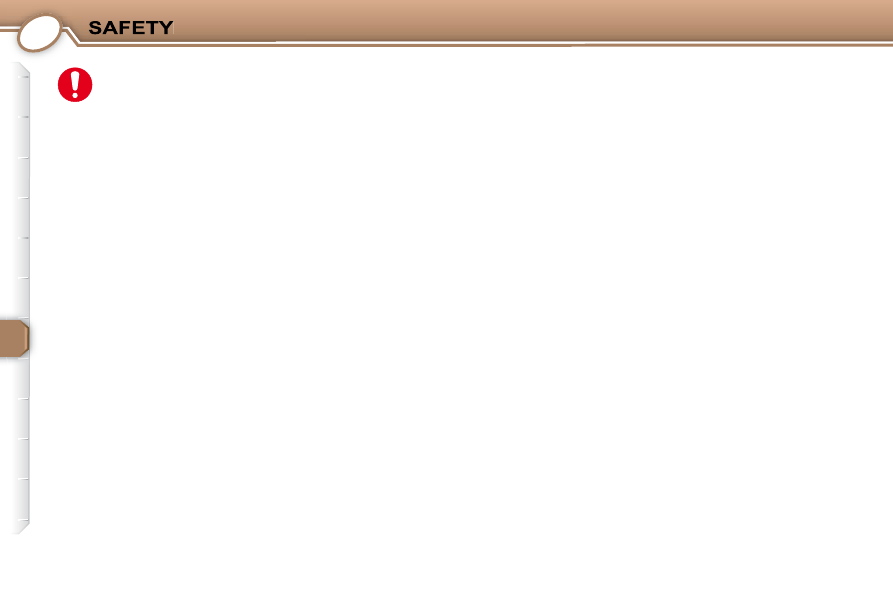Peugeot 607 Dag (2009 year). Instruction - part 7

7
84
For the front, side and
curtain air bags to be
fully effective, observe
the following safety
rules:
Wear a correctly adjusted seat
belt.
Sit in a normal upright position.
Do not leave anything between the
occupants and the air bags (child,
animal, object...). This could ham-
per the operation of the air bags or
injure the occupants.
All work on the air bag systems is
strictly prohibited unless it is car-
ried out by qualifi ed personnel of
the PEUGEOT network.
After an accident or if the vehi-
cle has been stolen or broken
into, have the air bag systems
checked.
Front air bags
Do not drive holding the steering
wheel by its spokes or resting your
hands on the centre part of the
wheel.
Passengers must not place their
feet on the fascia.
Smoke as little as possible; de-
ployment of the air bags can cause
burns or the risk of injury from a
cigarette or pipe.
Never remove or pierce the steering
wheel or hit it violently.
Curtain air bags
Do not fi x or glue anything to the
pillars or the roof. This could cause
injury to the head when the curtain
air bag infl ates.
Do not remove the bolts from the
grab handles installed on the roof,
they play a part in securing the cur-
tain air bags.
The triggering of an air bag or air bags
is accompanied by a slight discharge
of harmless smoke and a noise, due
to the activation of the pyrotechnic
cartridge incorporated in the system.
This smoke is not harmful but sensi-
tive individuals may experience slight
irritation.
The noise of the detonation may result
in a slight loss of hearing for a short
time.
Even if all of the precautions men-
tioned are observed, a risk of injury
or of slight burns to the head, chest
or arms when an air bag is triggered
cannot be ruled out. In fact, the bag in-
fl ates almost instantly (within approxi-
mately 30 milliseconds) then defl ates
within the same time discharging hot
gas via the openings provided for this
purpose.
This equipment will only operate once.
If a second impact occurs (during the
same or a subsequent accident), the
air bag will not operate.
Side air bags
Only put approved covers on the
seats, these will not hinder the in-
fl ation of the side air bags. Consult
a PEUGEOT dealer.
Do not fi x or glue anything to the
seat backs. This could cause injury
to the chest or arms when the side
air bag is triggered.
Do not sit with the upper part of the
body any nearer to the door than
necessary.